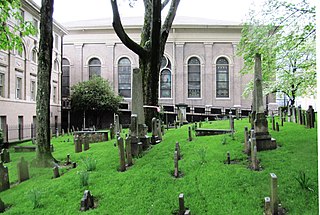 W
WThe Knoxville metropolitan area, commonly known as Greater Knoxville, is a metropolitan statistical area centered on Knoxville, Tennessee, the third largest city in Tennessee and the largest city in East Tennessee. It is the third largest metropolitan area in Tennessee. In 2019, the metro area had an estimated population of 1,045,111. The KMSA is, in turn, the central component of the Knoxville–Morristown–Sevierville Combined Statistical Area, which, in 2019, had a population of 1,146,049.
 W
WChilhowee Park is a public park, fairgrounds and exhibition venue in Knoxville, Tennessee, United States, located off Magnolia Avenue in East Knoxville. Developed in the late 19th century, the park is home to the Tennessee Valley Fair and hosts several dozen expositions annually. The park covers 81 acres (33 ha), and includes a 57,100-square-foot (5,300 m2) exposition center, a 1910-era bandstand, a 4,500-seat amphitheater, and a 3-acre (1.2 ha) lake, Lake Ottosee. The park is also home to The Muse Knoxville, a children's science museum formerly known as the East Tennessee Discovery Center.
 W
WThe Emory Place Historic District is a historic district in Knoxville, Tennessee, United States, located just north of the city's downtown area. The district consists of several commercial, residential, religious, and public buildings that developed around a late nineteenth century train and trolley station. The district includes the Knoxville High School building, St. John's Lutheran Church, First Christian Church, and some of the few surviving rowhouses in Knoxville. The district was listed on the National Register of Historic Places in 1994.
 W
WThe First Presbyterian Church Graveyard is the oldest graveyard in Knoxville, Tennessee, United States. Established in the 1790s, the graveyard contains the graves of some of Knoxville's most prominent early residents, including territorial governor and Constitutional Convention delegate William Blount and Knoxville founder James White. In 1996, the graveyard was added to the National Register of Historic Places.
 W
WKnoxville National Cemetery is a United States National Cemetery located in the city of Knoxville, Tennessee, United States. Established during the Civil War in 1863, the cemetery currently encompasses 9.8 acres (4.0 ha), and as of the end of 2007, had 9,006 interments. The 60-foot (18 m) Union Soldier monument, which stands in the eastern corner of the cemetery, is one of the largest Union monuments in the South. In 1996, the cemetery was added to the National Register of Historic Places as part of a multiple properties submission for national cemeteries.
 W
WMarket Square is a pedestrian mall located in Knoxville, Tennessee, United States. Established in 1854 as a market place for regional farmers, the square has developed over the decades into a multipurpose venue that accommodates events ranging from concerts to political rallies, and has long provided a popular gathering place for artists, street musicians, war veterans, and activists. Along with the Market House, Market Square was home to Knoxville's City Hall from 1868 to 1924. Market Square was listed on the National Register of Historic Places in 1984.
 W
WThe North Hills Historic District is a residential subdivision in north Knoxville, Tennessee, United States, that was added to the National Register of Historic Places in September 2008 as a historic district. The subdivision was established in 1927 by the North Hills Corporation as a neighborhood of custom-built homes, catering to middle-class families. The historic district includes 130 houses on about 50 acres (20 ha). At the time of its listing on the National Register, it was described by the Tennessee Historical Commission as a good example of mid-20th century residential architecture.
 W
WOld Gray Cemetery is the second-oldest cemetery in Knoxville, Tennessee, United States. Established in 1850, the 13.47-acre (5.45 ha) cemetery contains the graves of some of Knoxville's most influential citizens, ranging from politicians and soldiers, to artists and activists. The cemetery is also noted for the Victorian era marble sculpture and elaborate carvings adorning many of the grave markers and headstones. In 1996, the cemetery was added to the National Register of Historic Places.
 W
WSharp's Ridge is a steep limestone ridge in Knoxville, Tennessee, north of the city's downtown. A 111-acre (45 ha) area of the 7-mile (11 km) ridge is maintained as Sharp's Ridge Memorial Park, a city park dedicated to the honor of the area's war veterans. The ridge also is the site of a transmitting antenna farm that serves most of Knoxville's broadcasters. The highest ground point on the ridge is an abandoned fire tower located at 1,391 feet (424 m) above mean sea level. The ridge itself averages 200 to 300 feet above the surrounding valley floor, allowing panoramic views of the Great Smoky Mountains and adjacent ranges to the east and the Cumberland Plateau to the west.
 W
WWorld's Fair Park is a public park in downtown Knoxville, Tennessee. The park sits on the former fairgrounds of the 1982 World's Fair hosted in Knoxville. Today, the park is home to the Sunsphere and the Tennessee Amphitheater, the two remaining structures from the exposition.